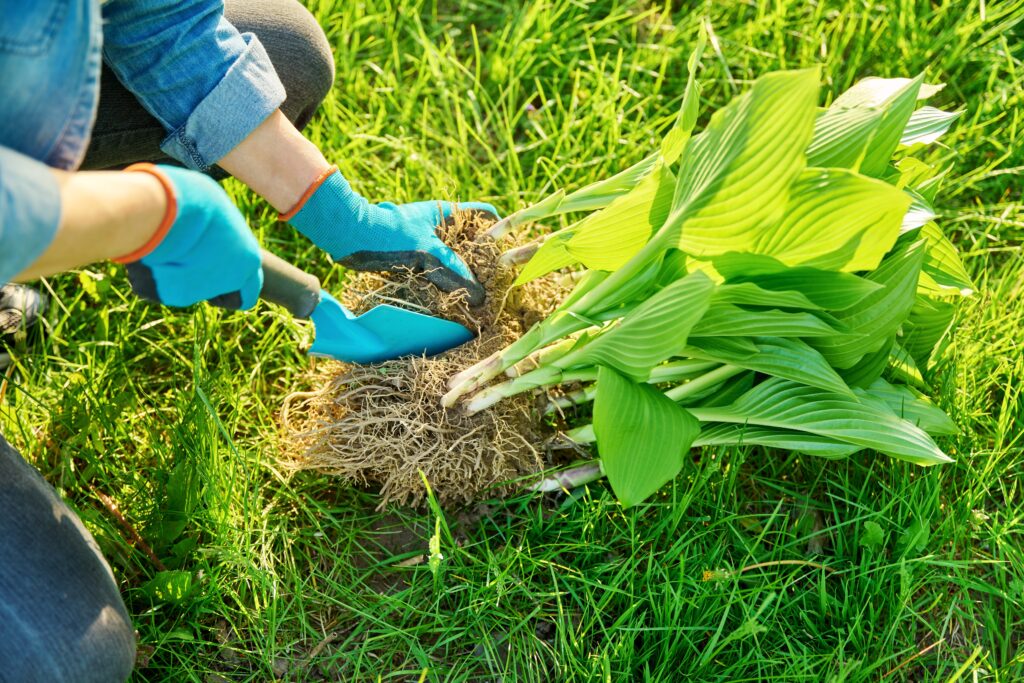Divide and Conquer: Splitting Perennials in the Fall

One of the easiest (and cheapest!) ways to refresh your landscape is by dividing perennials. Over time, many perennials grow into crowded clumps that bloom less and compete with themselves for water and nutrients. Splitting them not only keeps plants healthier, it gives you extra starts for other spots in your yard—or to share with friends.
Fall is an excellent time to divide many perennials. The soil is still warm, which encourages new root growth, while cooler air temperatures reduce stress on the plant. The trick is knowing which plants divide well in fall, and which are better left for spring.
How to Divide Perennials in Fall
- Pick the right day. Choose a cool, cloudy day when rain is in the forecast if possible. This reduces stress and helps the roots settle in.
- Water ahead of time. Give your plants a deep drink a day or two before dividing so the roots are hydrated and easier to work with.
- Dig up the clump. Start several inches away from the crown and dig a wide circle so you don’t slice too many roots. Gently lift the clump out of the ground.

- Shake or wash off soil. This makes it easier to see where natural divisions are.
- Split into sections. Use your hands to tease apart roots, or if the clump is tough, use a sharp knife or spade. Each division should have several healthy roots and at least one or two growing points (or “eyes”).

- Replant promptly. Set each new division at the same depth it was growing before. Fill in with soil, firm gently, and water thoroughly.
- Aftercare. Keep the soil consistently moist for the next few weeks while roots reestablish. Adding a light mulch layer helps retain moisture and protects against sudden frosts.
Perennials You Can Divide in Fall
These spring and early-summer bloomers can benefit from fall division:
- Daylilies (Hemerocallis) – Dividing every 3–5 years keeps clumps blooming.
- Hostas – Fall division works well, though they can also be divided in spring.
- Irises – Bearded irises especially benefit from thinning crowded rhizomes.
- Peonies – Best divided in early fall if you need to move or thin them.
- Bee balm (Monarda) – Dividing reduces overcrowding and helps prevent mildew.
Perennials to Wait and Divide in Spring
Late-summer and fall bloomers do better if divided in spring, giving them the whole season to regrow before flowering:
- Coneflowers (Echinacea)
- Black-eyed Susans (Rudbeckia)
- Asters
- Yarrow (Achillea)
- Ornamental grasses (Miscanthus, switchgrass, etc.)
A Flexible Rule of Thumb
In general, spring and early-summer bloomers are divided in fall, and fall bloomers are divided in spring. But it isn’t always a hard-and-fast rule. Some plants—like hostas—can be divided successfully in either season. Every garden is a little different, so do a bit of research before you dig, or try your own experiment to see what works best in your yard.
The Takeaway
For many gardens, fall is a superb time to divide perennials: the weather is cool, the soil is warm, and your plants have weeks to settle in before winter. With a little effort now, you’ll enjoy healthier plants and even more color next year.
CATEGORY
9/02/2025
a word from our viewers